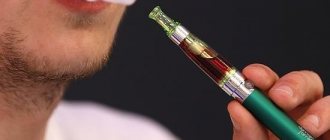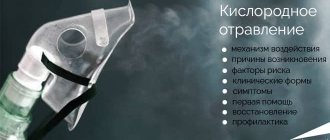A. Einstein’s brilliant foresight, made back in 1917, about the possibility of induced light emission by atoms, was brilliantly confirmed almost half a century later with the creation of quantum generators by Soviet physicists N. G. Basov and A. M. Prokhorov. According to the English abbreviation, this device is also called a laser, and the radiation they create is laser.
Where do we encounter laser radiation in everyday life? Nowadays, lasers have become widespread in various fields of technology and medicine, as well as lighting effects in pop performances and shows. The beauty of shimmering and dancing laser beams has made them very attractive to home experimenters and manufacturers of laser gadgets. But how does laser radiation affect human health?
To understand these issues, it is necessary to recall what laser radiation is. To do this, let’s “move forward” to a physics lesson in the 10th grade and talk about light quanta.
What is laser radiation
A laser beam is formed as a result of the concentration of electromagnetic and light radiation. Experts call this type of radiation stimulated. Physicists understand a laser as electromagnetic waves propagating almost parallel to each other. That is why it has a strict focus. Also, such a beam is characterized by an intense effect on the irradiated surface and a low level of dispersion. What distinguishes a laser from ordinary incandescent light bulbs is its spectral range.
US Air Force shoots down a UAV
In June 2020, the US Army successfully tested laser cannons mounted on Apache helicopters. According to manufacturer Raytheon, this was the first time that a fully integrated laser system on board an aircraft successfully acquired and fired targets across a wide range of flight conditions, altitudes and speeds. The weapon has a range of about 1.5 km, is silent and invisible to people. They are also extremely accurate. The Army plans to use similar lasers to defend against any future drone attacks.
Popular Applications
The laser beam has unique characteristics. This makes it possible to use it in a variety of areas:
military and space industry;- science - discoveries, experiments, research;
- technical and production areas;
- heat treatment - soldering, engraving, welding, etc.;
- household use - DVD players, pointers, barcode readers, etc.;
- production of holograms;
- processing of metal alloys to increase wear resistance;
- modernization of optical instruments;
- chemistry - analysis and activation of reactions.
This is a partial list of areas where laser radiation is used. Since its inception, it has covered more and more areas.
If you're still too young
Don’t be upset if laser hair removal is not suitable for you based on some parameters, including age. It is completely natural that you want to be beautiful at any age - it is in youth that attractiveness becomes a subject for research, gaining first experience in this regard.
It is important to remember that the hormonal background of a teenager is changeable; in girls, this adjustment is often very complex, and you should not resort to laser. Experts note that the laser affects unformed ovaries and an irregular menstrual cycle.
An alternative is hair removal/depilation using different methods.
- The good old razor has never made anyone its victim among those who know how to handle it correctly and carefully;
- Depilation strips, wax and sugaring affect the skin mechanically, do not change hormonal levels and are invisible to the body as a whole;
- Tweezers for depilation in different places can give a feeling of tenderness and comfort.
Use in medicine
The use of laser radiation in medicine is a real breakthrough in the treatment of patients who need surgery. The laser beam is also used as a surgeon's tool.
Using a laser-type scalpel, the doctor creates bloodless incisions, which is ensured by instant soldering of capillaries and blood vessels. In addition, using such tools, a specialist has the opportunity to see the entire work area. The laser beam cuts the skin remotely, without direct contact with blood vessels and organs.
Read also The danger of radiation to life and its threat to human health
In this case, sterility is achieved. The high laser concentration makes it possible to perform surgical interventions with minimal trauma. Patients recover much faster after such operations, that is, their ability to work returns much faster. In addition, manipulations with a laser scalpel do not cause any discomfort after surgery.
Active technological development has significantly expanded the possibilities of using laser radiation. Scientists have discovered a positive effect on the condition of the skin. For this reason, lasers are often used today in dermatology and cosmetology.
The reaction and degree of absorption of rays by the skin depends on its type. Laser devices allow you to adjust the length of the hair for each individual situation. Application:
- acne therapy;
- hair removal - removal of excess vegetation and destruction of the hair follicle;
- elimination of birthmarks and pigmentation;
- disinfection due to bacterial exposure;
- prevents further spread of infection.
One of the very first industries where lasers began to be actively used was ophthalmology. Ocular microsurgery distinguishes the following areas in which this type of irradiation is used:
- photodestruction - tissue excision;
- laser coagulation method - the use of thermal properties for the treatment of diseases of the ocular vessels;
- photoablation - uniform removal of tissue fibers, used to remove corneal opacities and as a postoperative treatment for glaucoma;
- photoevaporation - prolonged thermal exposure, used for conjunctivitis and inflammation of the optic nerve;
- laser stimulation - the benefit is that this technology has a resolving and anti-inflammatory effect and is used to treat hemophthalmos and scleritis.
Among other things, the laser is also used for oncological pathologies of the skin. It demonstrates very good results in eliminating melanoblastoma. In some cases, laser technology is used to treat early stage gastrointestinal cancer. However, the laser is not effective in the presence of metastases and deep localization of the malignant tumor.
Contraindications
ABOUT HAIRHair wrap
Laser hair removal of the bikini area - before and after the procedure
Like any procedure, laser hair removal, despite such alluring advertising calls from salons, has a lot of contraindications. If there is no doctor in the salon who can give an opinion that this procedure is harmless to the client’s body and does not entail any threats, this responsibility is assumed by a specialist who will carry out all manipulations with the device. All responsibility falls not only on the salon employees, but also on the client himself, who is obliged to notify the master about possible risks before the start of the procedure.
In turn, contraindications are divided into two types - absolute and relative.
Absolute contraindications
- skin diseases such as herpes or purulent rash;
- diabetes;
- oncological diseases;
- dark skin type or tan;
- progressive infectious diseases;
- pregnancy and lactation period;
- the presence of light hairs on the treated area;
Relative contraindications
- varicose veins;
- birthmarks or age spots;
- injuries, abrasions, cuts on the treated area;
- allergic reactions;
- hormonal imbalance;
- menstrual cycle;
- violation of tissue regeneration;
Danger to the body
The negative impact of laser radiation on the human body has long been proven. Irradiation can be reflected, diffuse and direct. The detrimental effect is due to the thermal and light properties of the laser. The intensity of the lesion is determined by the level of tissue absorption, wavelength and the area targeted.
Read also Alpha radiation: characteristics, protective measures and benefits
The eyeballs may suffer more than other parts of the body from the laser. The cornea is extremely sensitive, so it easily gets burned. The consequences include a sharp decrease in visual function or absolute blindness. Radiation sources are usually infrared laser emitters. If the lens, cornea, retina or iris is damaged by a laser beam, the following symptoms may be observed:
- spasms and pain in the eyeball;
- clouding of the eye lens;
- hemorrhages and swelling of the eyelids.
Human skin is also vulnerable. At the point of its contact with the laser beam, the temperature increases. Interstitial and intracellular fluids begin to quickly boil and evaporate. Redness appears on the skin. After some time, dead areas may appear on the burned area. With powerful exposure, the skin chars almost instantly. The most important sign of a laser burn is the strict contours of the lesion, and the bubbles form not under the epidermis, but in it.
An infrared laser can affect not only the skin, but also internal organs, as it penetrates tissue. A deep burn is characterized by a sequence of damaged and healthy tissue. At first, after the harmful effects, a person does not have any discomfort or pain. The liver is considered the most vulnerable internal organ.
In addition, the effect of laser on the human body causes disorders of the cardiovascular system and central nervous system (cardiovascular and central nervous systems, respectively). The victim may experience profuse sweating, slow heart rate, pressure surges and a feeling of irritability.
Customer opinions
Many girls decide to undergo such treatment even if there are contraindications, especially if the woman suffers from too rapid hair growth and thickness. For such clients, laser hair removal is a real salvation.
According to statistics, more than 80% of girls who have completed the entire course claim that there are no side effects after treatment. No more than 10% of clients also experience inflammation of the skin, and most often this adverse reaction is a consequence of ignoring recommendations for care and recovery.
Share your impressions in the comments below the article
Protective and Precautionary Measures
The risk group includes people whose work involves the use of quantum generators. Sanitary standards divide the danger of laser radiation into four classes. All classes except the first can pose a danger to the human body. Technical protection options include:
- competent arrangement of industrial premises and the correct choice of internal cladding (the laser should not be reflected from surfaces);
- rational installation of emitter devices;
- fencing the area that is exposed to irradiation;
- compliance with the requirements for operation and maintenance of laser systems.
Read also Ozonizer: harm, benefits and application features
Other protective measures are individual. It involves the use of protective glasses, protective clothing, screens, casings, prisms and lenses.
Household use of lasers can also pose a danger to the human body. Failure to follow instructions can lead to very sad consequences. Protection in this case involves the following recommendations:
- It is prohibited to direct the laser beam at mirrors, glass and other reflective surfaces;
- Do not direct the beam at the eyeballs;
- Laser gadgets should be stored in a place inaccessible to small children.
A laser can have a mechanical, photochemical, energetic or thermal effect. This depends on the type of emitter used. Direct laser radiation is considered the most dangerous, since it has maximum intensity. When thinking about whether a laser is harmful to health, you should remember that the irrational use of homemade laser devices, flashlights or light signals can cause harm not only to the owner, but also to others.
When the procedure is harmful
TOP 7 reasons why you should go for laser hair removal?
Laser hair removal may be harmful under the following conditions.
- If the skin has been exposed to ultraviolet radiation (even a light tan can cause trouble). Therefore, the procedure should begin in late autumn and winter.
- If there are moles, age spots, abrasions, scratches on the skin.
- The length of the hairs is more than two to three millimeters; if the hair is longer, it can melt and damage the epidermis.
- A month or less before the procedure, the skin underwent hair removal and sugaring.
- Skin diseases are a contraindication for hair removal.
- Tendency to form keloid scars.
- Hormonal disorders and unstable menstrual cycle are not contraindications, but before the procedure it is better to consult a gynecologist. You should also remember that the ideal days for hair removal are days 7–12 of the menstrual cycle.
Epilation may be unsafe for the skin even after the procedure. For one to two weeks you should not be in the sun and you should avoid baths, saunas, and swimming in rivers.
The harm of laser hair removal will be undeniable if you decide to do the procedure for the following diseases and conditions:
- the presence of diseases of the endocrine system (diabetes mellitus);
- autoimmune disorders (systemic lupus erythematosus);
- presence of herpes;
- oncology;
- pregnancy and breastfeeding;
- eczema, psoriasis.
Before the procedure, it is better to visit a doctor and do the necessary tests that will exclude the presence of oncology and hormonal pathologies.
Laser hair removal is a costly procedure. But it’s better not to save on it, so as not to regret the consequences. If you have a choice of having hair removal done in a beauty salon or in a medical center, it is better to choose a center where doctors with medical education work.
It is worth remembering that cosmetologists are not responsible for your health. You can come for hair removal with a fresh tan and they will offer you this procedure without hesitation, despite all the consequences. Bringing them to justice for the damage caused is a very difficult matter. Therefore, you should think three times before deciding on the procedure. Even the smallest defect, for example, a pigment spot, is unlikely to be removed, unlike hairs.
Many people opt for epilators that can be used at home. Laser hair removal still requires the necessary qualifications, and before using this technique, you should undergo training in special courses. If you start using a laser based on advice on the Internet, such hair removal at home can lead to burns and spots.
Causes of complications
There are several main reasons leading to the development of complications after hardware hair removal:
1 - Unprofessionalism of the doctor
Expert errors may include:
- incorrect diagnosis (especially when identifying the phototype of the integument);
- incorrect choice of luminous flux parameters and laser type;
- lack of professionalism and poor quality training of the doctor;
- lack of consultation with the patient about further actions after manipulation and care of the epidermis.
It happens that sad consequences arise due to a malfunction of the device that the cosmetologist did not notice.
2 — The patient’s health status during the procedure
The doctor cannot know about all the pathologies occurring in the patient’s body. In most cases, the person himself does not know that he is sick, so he faces complications in the post-procedure period.
3 – Failure to comply with doctor’s recommendations
If you neglect the cosmetologist’s recommendations for skin care, you may encounter various complications, the symptoms of which can significantly spoil the appearance of the skin.
Doctors' opinion
Laser hair removal, the contraindications and consequences of which are actively discussed by the medical community, is a completely safe cosmetic method. The vast majority of experts are confident in this.
Opinion of Elena Malysheva
According to Elena Malysheva, for irrevocable, and most importantly, safe hair removal, you need to choose only a proven clinic and a professional hairdresser.
Watch a video recording of Elena Malysheva’s program about the most effective hair removal.
Plastic surgeon, Ph.D. Sergey Grigorievich Chub
S. G. Chub confirms that laser hair removal helps to completely get rid of unwanted hair in just 4-6 procedures.
I recommend reading:
What colors does yellow go with in clothes: 19 successful color mixes
What colors does pink go with in clothes: 22 variations from stylists
What colors does orange go with in clothes: 20 best color combinations + selection of shades
What colors does purple go with in clothes: 19 best partners on the color wheel + analysis of shades
What colors does green go with in clothes: 20 beautiful combinations
Prevention
It consists of strict adherence to safety precautions when working with laser radiation sources. Much attention is paid to sanitary and hygienic measures when working with laser beams (remote control of the laser beam, shielding of the radiation source, use of special clothing, glasses). The rooms in which laser systems are operated should not have possible sources of reflection (polished surfaces). The walls of the rooms are painted only with dark, matte paint. During work there should be breaks of 10-15 minutes throughout the shift.
When hired to work with lasers, as well as in the process of working with lasers, workers are subject to a mandatory medical examination by a therapist, ophthalmologist and neurologist. All employees undergo a complete blood test at least once a year.
Literature: Occupational diseases / edited by: A.V Afanasyev, S.Ya. Dotsenko, S.I. Svistun, V.M. Heavy
How to prepare to minimize risks?
Reduces the risk of complications and side effects by following these rules:
- do not sunbathe a month before hair removal;
- do not remove hair 14 days before the procedure;
- Do not take antibacterial medications from the tetracycline group. They reduce the effectiveness of the laser;
- for dark-skinned epidermis, lighten it with special cosmetics;
- do not use greasy cosmetic products before the session.
Experts recommend laser hair removal in the autumn and spring to avoid unwanted tanning.
Mythbusting
There is some good news. Some arguments about the dangers of laser hair removal are far-fetched.
Myth 1. No tanning before hair removal
There is a lot of debate about the benefits and harms of tanning, especially if it is obtained artificially. If you were just about to go sunbathing, then read whether it’s true or fiction.
Tanned skin cannot affect the hair removal procedure in any way. The myth comes from the times when laser hair removal was just beginning to emerge, using the principle of selective photothermolysis. And it really had a detrimental effect on tanned skin. Modern technologies allow you to ignore this.
Myth 2. Internal organs are damaged
Forget scary stories about damage to internal organs or their exposure to radiation during the procedure. The spectrum of the beam is so small that it will not go anywhere further than the hair follicle. This means it will not penetrate the skin.
Myth 3. Provoking cancer
Hair removal, even such a radical one, cannot cause cancer. This requires a whole set of conditions. But it is quite possible to develop a maturing malignant formation. But radio frequency devices, junk food, and even the habit of biting your lips have this feature.
Undoubtedly, before the procedure it is necessary to consult with a specialist and undergo an examination.
Myth 4. Provoking skin burns
The laser does not burn the skin itself, but the hair follicle, splitting the main coloring substance - melanin. The remaining areas of the skin have it in small quantities, and therefore the laser does not see them. Even if you feel heat during the procedure, it will not be enough to burn the skin.
Consequences of sugaring, which is considered less dangerous
arrow_left
Consequences of sugaring, which is considered less dangerous
Myth 5. Ingrown hairs and scars form
When removing hair at home, such a nuisance is no exception, since the epidermis is injured. The laser acts on the hair itself without disturbing the structure of the skin, which means it eliminates the problem of ingrown hairs.
Burnt fingers
The Australian wanted to remove some tattoos from his knuckles, but it all ended with severe burns. The doctor said he would need ten to twelve sessions of $170 laser surgery to remove the "Live Free" sign from his fingers, but an anonymous patient began asking questions after nearly 20 sessions failed to produce the desired results. The doctor tried to speed things up a little and set the laser machine to the highest power. As a result, my fingers were burned 3 mm.
Doctors do not recommend shining a laser pointer into your eyes, as long-term exposure can cause retinal damage. If discomfort occurs in the visual area, you should consult an ophthalmologist. An acute reaction of the body may indicate the occurrence of serious pathological processes in the body and ophthalmological diseases.
Treatment
Depends on the severity of clinical symptoms and changes in individual organs and systems. In case of advantage of astheno-neurotic syndrome, the following are prescribed: seduxen, vitamins B1, B6, B15, lemongrass tincture, calcium gluconate, glutamic acid, valerian tincture.
Physiotherapy: galvanic collar, pearl baths, showers, massage.
When dystrophic changes in the myocardium appear: riboxin, ATP.
Changes in the visual organs require treatment in a specialized department.











